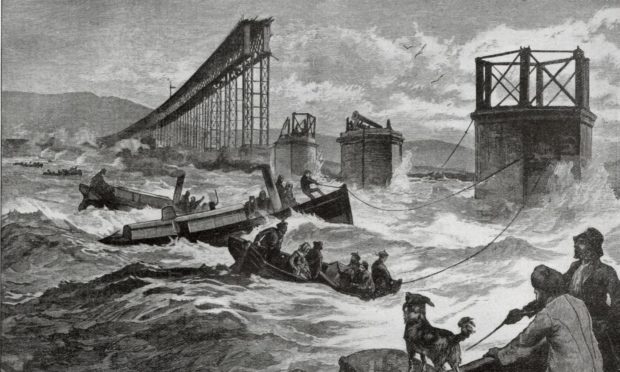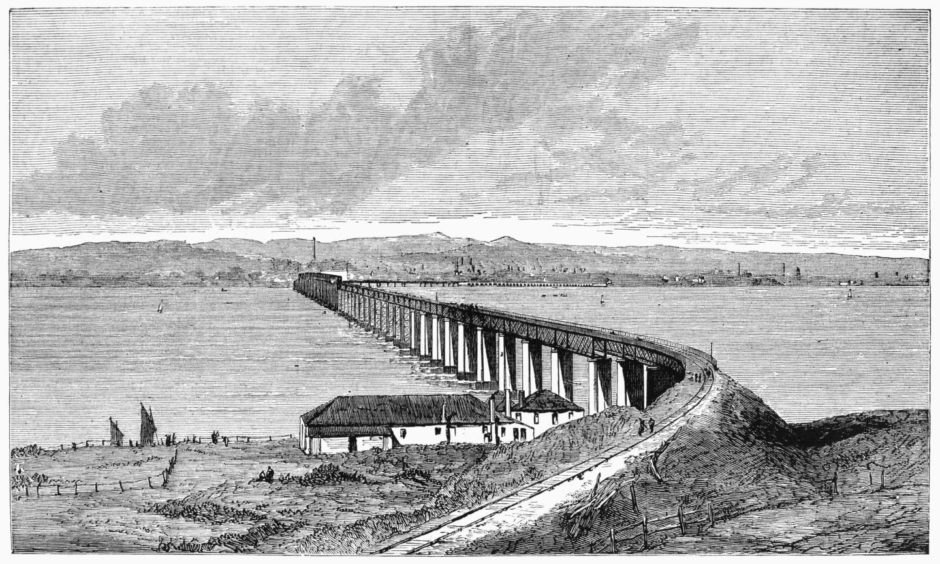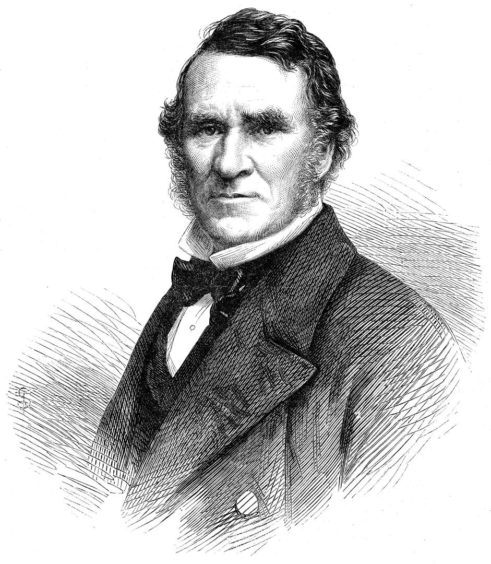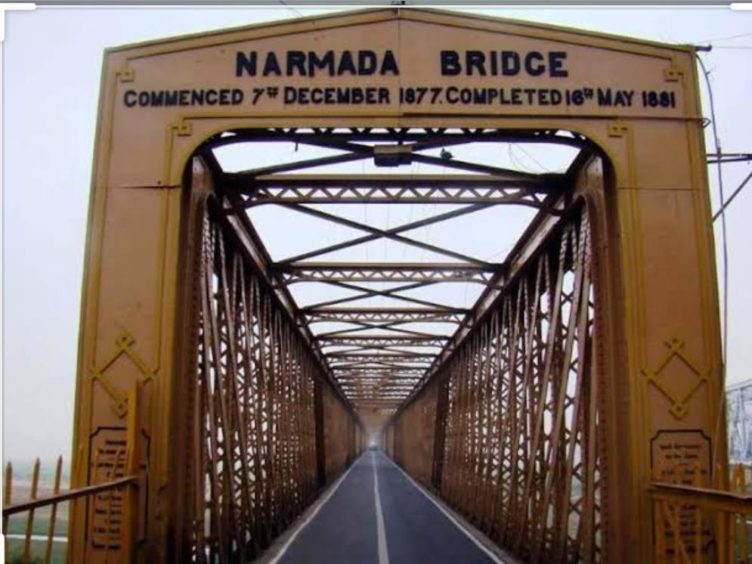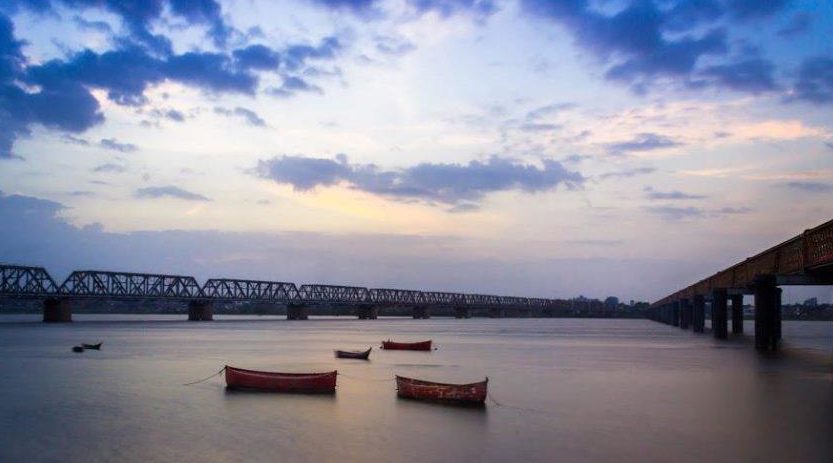The Golden Bridge serves as a reminder that Dundee’s role in Indian history during the time of British rule was about far more than jute.
The bridge across the Nerbudda River is celebrating its 140th anniversary.
It was built with the same iron used to construct the doomed first Tay Rail Bridge which opened in 1887 which was a year after work started in Bharuch.
The catastrophic collapse of the Tay Rail Bridge set alarm bells ringing and the designer recommended that an extra £25,000 be spent on strengthening it.
It was said that the cost was so high that the bridge could have been constructed in gold.
The tag stuck and the rest is history.
Remembering the Tay Rail Bridge Disaster
Local historian Dr Kenneth Baxter from the University of Dundee said: “Arguably no event in Dundee’s history is as well-known as the tragedy that was the Tay Bridge Disaster.
“Making international news at the time and the subject of much writing and media coverage since, the calamity has been engrained into generations of Dundonians’ consciousness, with the stumps of the piers of the first Tay Bridge remaining as a permanent visual reminder of the awful events of December 28 1879.
“Because the original Tay Bridge is inevitably remembered for this tragic disaster, it is very easy to forget that during its construction the Tay Bridge was seen as a major achievement in the history of engineering and transport.
“Unsurprisingly it attracted interest from across the world and proved wildly influential.
“A measure of its fame and importance can be seen in the fact that General Ulysses S Grant, who had just finished two terms as president of the United States, and the emperor of Brazil were among those who came to see the progress of the construction of the bridge in 1877 which seemed set to be another in the long line of British and Scottish engineering triumphs.
“Its official opening in June 1878 was celebrated as a great day in the history of Scotland.
“Its fame and profile meant that other projects would be impacted by it.”
An obvious example of its international influence can be seen by a report in The Courier in June 1878 that made clear that the newly opened Tay Rail Bridge was attracting interest for its implications on bridge projects in India.
The Courier noted that an Indian publication, The Friend of India, had observed that the Board of Trade’s inspector Major General Hutchison had recommended painting the girders and iron work of the Tay Bridge white to reduce the expansion of the bridge in hot weather.
The Friend of India had noted that if the so-called “hot weather” of the “dreary shores of the bitter North Sea” would impact on the Tay Bridge then it would be more important to apply such measures to bridges in India where there was a much warmer climate.
Construction of the Golden Bridge
The original construction of the Golden Bridge in India started in 1861.
The pillars got swept away in 1863 then five spans got washed away in 1868 when villagers were marooned during the biggest flood on record.
The same happened in 1871 and 1873 before the British undertook the job in 1877 because they needed a bridge across the Nerbudda to enable easier access for trade.
The contract was made by the Bombay, Baroda, and Central India Railway Company and was designed by Sir John Hawkshaw whose many railway works took him to all parts of the world including Germany, Russia and Mauritius.
Alarm bells were ringing in the House of Commons when the Tay Bridge collapsed in 1879 when the wind pulled down the iron girders like matchwood.
Dr Baxter said: “Inevitably, the catastrophic failure of this great engineering project, and the significant loss of life it caused, was news that spread around the world and shocked many.
“This made it inevitable that people would be suspicious of similar engineering projects that were in progress and that their backers would have to take what at happened to the Tay Bridge into account for reasons of both safety and public confidence.”
Newspaper reports from 1880 and 1881 make it clear that Sir John Hawkshaw made recommendations that additional outlay of about £25,000 be spent on strengthening it considering what had happened to the Tay Bridge, and that the Tay Bridge Disaster was cited as a factor in the rising costs of the project.
Disaster was raised in parliament
The Glasgow MP George Anderson raised the issue of the connection between the two bridges in parliament in June 1880.
There were calls for the Indian Government to start an investigation as to the quality and kind of iron used for the bridge across the Nerbudda following the tragedy.
The Marquis of Hartington, who was the Secretary of State for India at the time, said it was indeed true that the same firm were involved with both bridges.
He said: “The plans and specifications of the Nerbudda Bridge were prepared by Sir John Hawkshaw, and the whole process of supplying the iron work has been carefully watched and inspected under his directions.
“Upon the occurrence of the breakdown of the Tay Bridge, the directors of the company gave special directions to Sir John Hawkshaw to be most particular in carrying out the duty of inspection.
“No complaints have been received from India of the quality of the iron; but a second examination is made there, and severe tests are applied to the piers and the girders when placed in position.
“There can be no doubt that the engineers employed in designing and constructing bridges in India since the Tay Bridge disaster have been fully alive to the necessity of the most careful specifications being prepared, and of the most conclusive tests being applied to materials before they are accepted.”
A special report was also prepared on the bridge before it was opened for traffic.
Dr Baxter concluded: “There can be no doubt then that the Golden Bridge was shaped by what happened on the Tay and shows the influence and importance of the story of the first Tay Bridge extended well beyond Scotland.
“It is also a reminder that Dundee and Scotland’s role in Indian History during the time of British rule was about far more than jute.”
The Golden Bridge was finally completed on May 16 1881
The bridge took three-and-a-half years to complete and eventually opened in 1881.
The whole cost of the £333,000 structure – with the exception of some £40,000 – was entirely met out of surplus earned by the Bombay, Baroda and Central India Railway over and above the amount required to meet the guaranteed interest.
A special train was put on from Bombay in the early hours of the morning to bring the invited guests to the official opening.
The guests got out to view the bridge and Colonel Hancock, the consulting engineer to government, carried out a formal inspection of the work.
A social event followed the official opening which included speeches to mark the occasion.
The Golden Bridge has seen many floods and natural disasters like earthquakes and continues to provide daily transportation to the people of Ankleshwar and Bharuch.
At one time during World War Two a financial crunch had even forced the government to decide on destroying the bridge for its iron, but the love of locals for the bridge saved it.
After independence it became part of the national highway and the rail tracks were pulled up.
